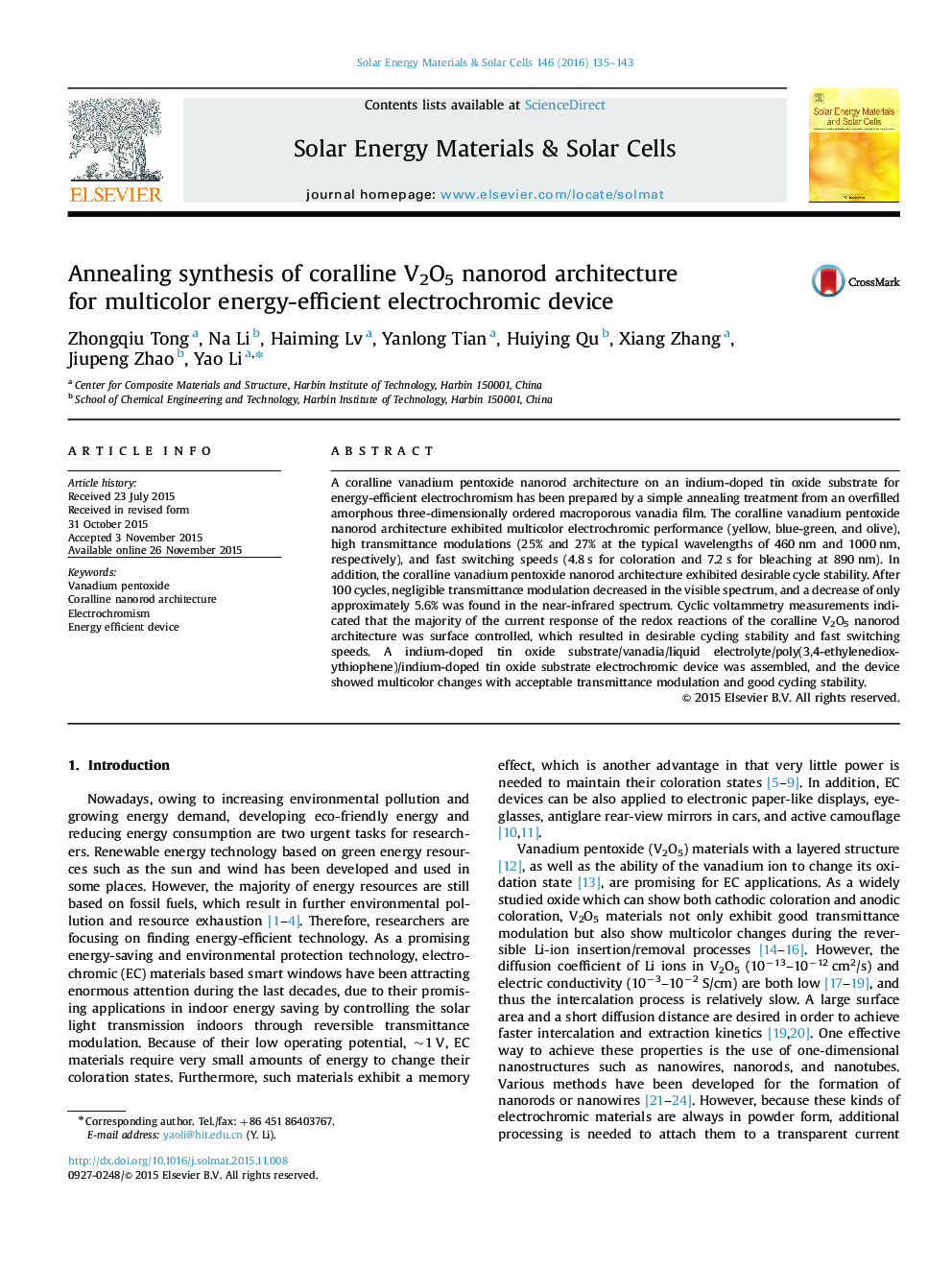| Article ID | Journal | Published Year | Pages | File Type |
|---|---|---|---|---|
| 77654 | Solar Energy Materials and Solar Cells | 2016 | 9 Pages |
•Coralline V2O5 nanorod architecture was prepared from a 3DOM vanadia film.•Coralline V2O5 nanorod architecture showed multicolor electrochromic performance.•Cyclic voltammetry measurement indicated redox reactions were surface-controlled.•An electrochromic device based on vanadia film and PEDOT film was fabricated.
A coralline vanadium pentoxide nanorod architecture on an indium-doped tin oxide substrate for energy-efficient electrochromism has been prepared by a simple annealing treatment from an overfilled amorphous three-dimensionally ordered macroporous vanadia film. The coralline vanadium pentoxide nanorod architecture exhibited multicolor electrochromic performance (yellow, blue-green, and olive), high transmittance modulations (25% and 27% at the typical wavelengths of 460 nm and 1000 nm, respectively), and fast switching speeds (4.8 s for coloration and 7.2 s for bleaching at 890 nm). In addition, the coralline vanadium pentoxide nanorod architecture exhibited desirable cycle stability. After 100 cycles, negligible transmittance modulation decreased in the visible spectrum, and a decrease of only approximately 5.6% was found in the near-infrared spectrum. Cyclic voltammetry measurements indicated that the majority of the current response of the redox reactions of the coralline V2O5 nanorod architecture was surface controlled, which resulted in desirable cycling stability and fast switching speeds. A indium-doped tin oxide substrate/vanadia/liquid electrolyte/poly(3,4-ethylenedioxythiophene)/indium-doped tin oxide substrate electrochromic device was assembled, and the device showed multicolor changes with acceptable transmittance modulation and good cycling stability.
Graphical abstractCoralline V2O5 nanorod architecture on ITO substrates was designed and prepared by annealing treatment of an overfilling amorphous 3DOM vanadia film. This coralline nanorod architecture exhibited enhanced electrochromic performance with multicolor changes and desirable cycling stability.Figure optionsDownload full-size imageDownload as PowerPoint slide
